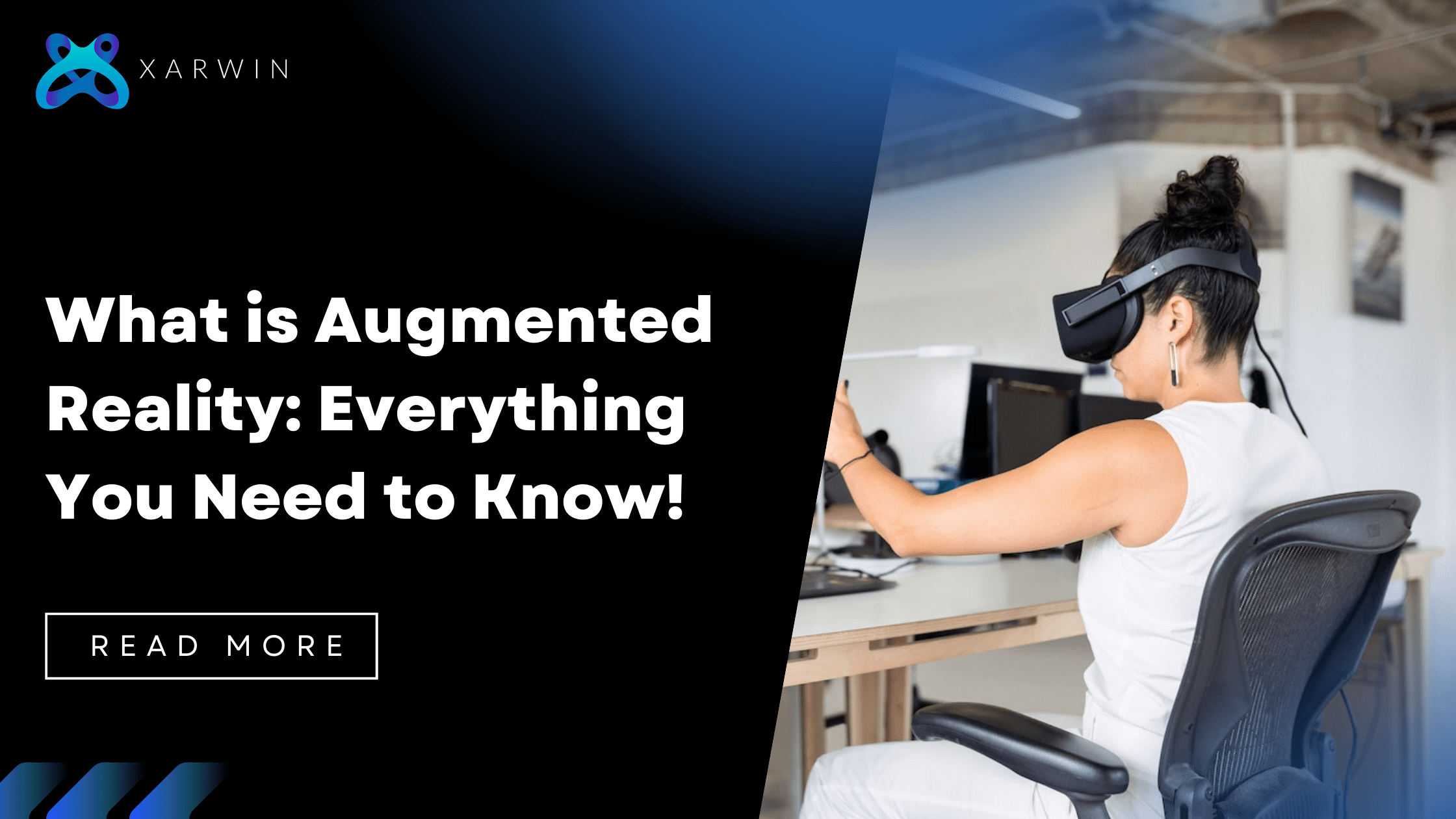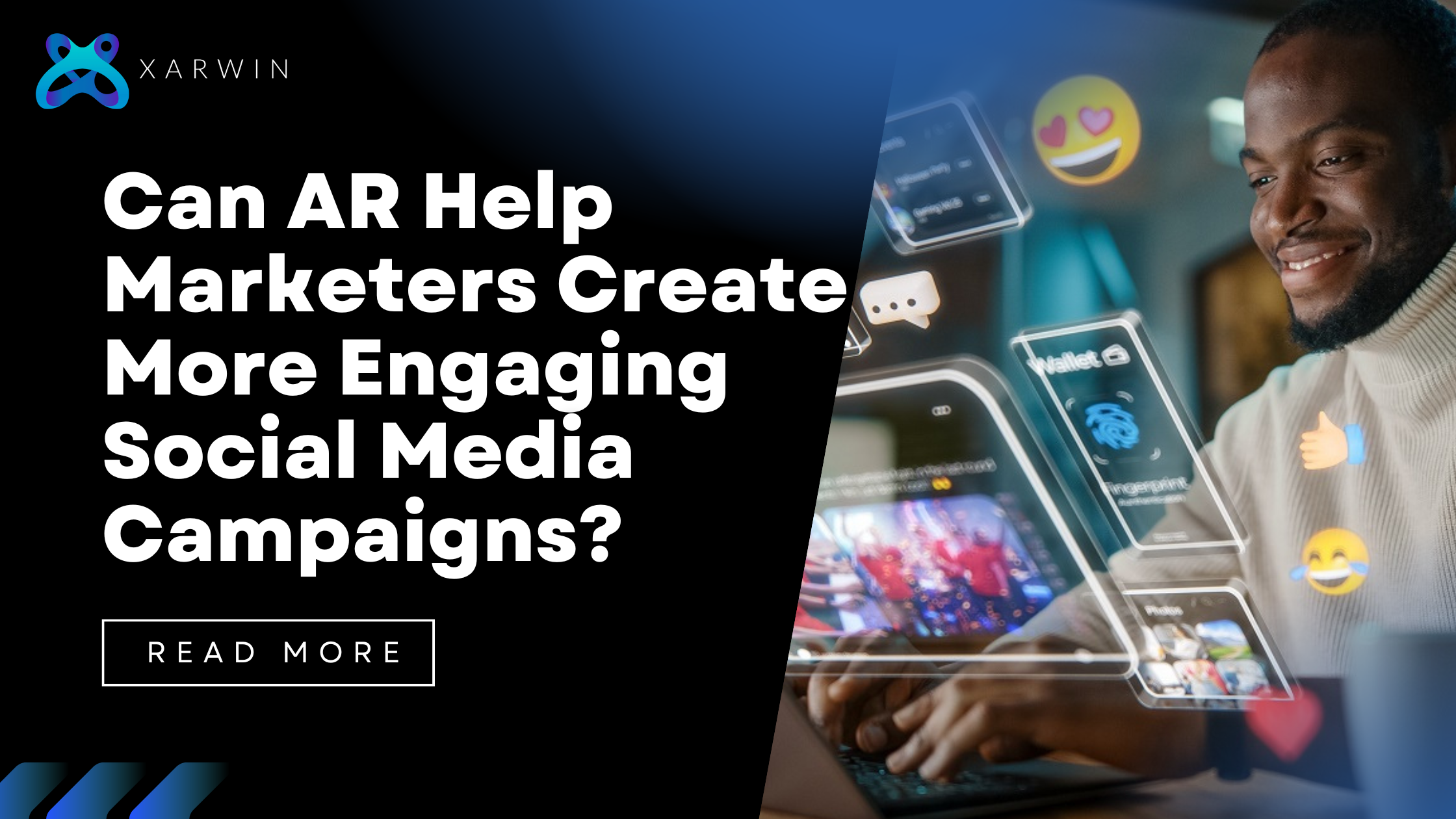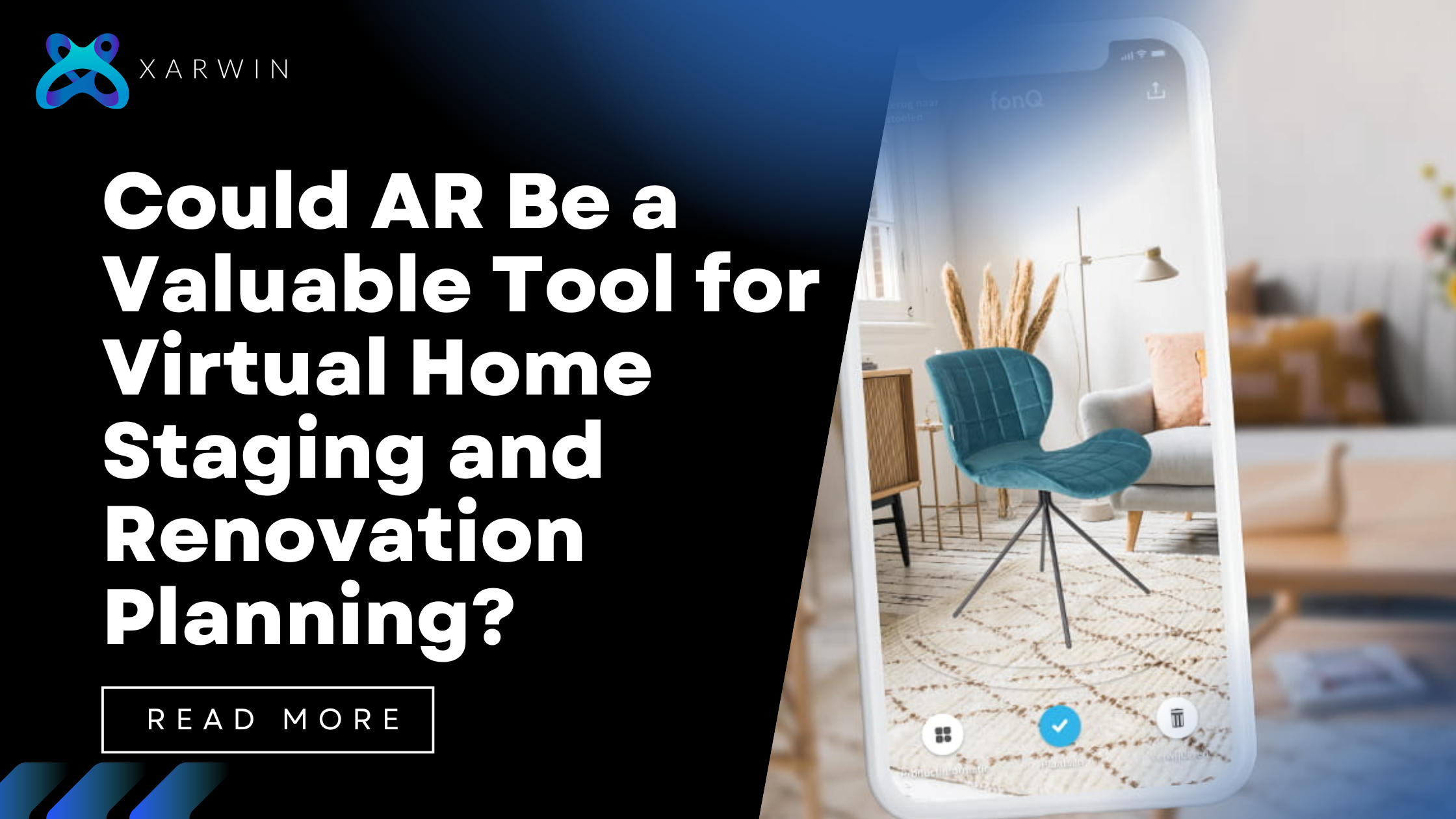Are you ready to take your reality to the next level? Augmented Reality (AR) is the future of technology, bringing digital objects and information to the real world in real time. AR is the perfect way to break the monotony of everyday life and discover a new exciting world.
AR: What is it?
Augmented Reality is a total game-changer that overlays digital objects onto the physical world, creating an entirely unique and exciting experience. By using a device’s camera and sensors, AR technology captures the real world and overlays digital objects on top of it, creating a perfect blend of the virtual and the real world. This technology is perfect for gaming, education, healthcare, retail, and marketing.
How Does AR Work?
The hardware includes cameras, sensors, and displays, which work together to create an exciting and interactive experience. It makes use of cutting-edge technology that allows digital objects to interact with the real-world environment.
Know about AR vs. VR
Now we may have an idea of what is AR and thus, AR and VR are the dynamic duos of the tech world. While VR creates an entirely artificial environment, AR overlays digital information into the real world.
Both technologies enhance our perception of reality but in different ways. VR technology uses a headset to immerse you in a digital world, while AR technology uses a smartphone or tablet to overlay digital information onto the real world.
Benefits of Augmented Reality
Get ready to experience the world like never before with Augmented Reality (AR). This revolutionary technology is the perfect way to break the monotony of everyday life and discover a new, exciting world. Here are some of the ways AR can benefit you:
1. Enhanced Gaming, Tourism, and Entertainment
AR has the power to transform your gaming, tourism, and entertainment experiences by overlaying digital images in the real world. Here are some examples:
- Gaming: Imagine playing your favorite game and seeing your surroundings come to life with virtual characters and objects. AR can take your gaming experience to a whole new level, making it more immersive and exciting.
- Tourism: AR can be used to create virtual tours of cities, museums, and other landmarks. You can explore the world and learn about different cultures in a more engaging way.
- Entertainment: AR can be used to create interactive experiences in concerts, movies, and other events. You can see virtual objects and characters come to life in real time, making the experience more fun and engaging.
2. Enhanced Learning through Interactive Educational Tools
AR can make learning more fun and engaging by providing interactive educational tools. Here are some examples:
- Textbooks: AR textbooks can come to life with interactive tools that make learning more engaging. You can visualize complex concepts and ideas in 3D and get a better understanding of the subject matter.
- Simulations: AR can be used to create simulations of real-world scenarios, making it easier for students to apply their knowledge in practical situations. For example, medical students can practice surgery on virtual patients.
3. Improved Efficiency in Manufacturing and Logistics
AR can improve efficiency in manufacturing and logistics by providing visualization and training tools. Here are some examples:
- Visualization: AR can be used to visualize complex assembly procedures, making it easier for workers to understand the process. This can help reduce errors and increase efficiency.
- Training: AR can be used to provide virtual training for workers, allowing them to practice and perfect their skills without having to worry about breaking anything.
4. Enhanced Remote Collaboration and Communication
AR can enhance remote collaboration and communication by providing virtual workspaces. Here are some examples:
- Virtual Office: AR can be used to create a virtual office that you can access from anywhere. You can share your workspace with colleagues and collaborate in real time, no matter where you are in the world.
- Remote Assistance: AR can be used to provide remote assistance to workers in the field. For example, a technician can use AR to get real-time guidance from an expert in a different location.
AR technology has the potential to revolutionize the way we experience the world. It can make our lives more fun, engaging, and efficient. So, get ready to take your reality to the next level with AR!
Drawbacks of Augmented Reality
It’s Not All Rainbows and Unicorns. Sure, Augmented Reality (AR) is the future of technology, but let’s not ignore its downsides. Here are some drawbacks to consider:
1. Costly Hardware
AR technology doesn’t come cheap. You need a device with cameras, sensors, and displays to experience it. And let’s be real, top-notch hardware isn’t exactly budget-friendly.
2. Limited Field of View
AR technology has some limitations, one of which is its field of view. Depending on the device you’re using, you may not be able to see the entire augmented reality experience, which can be a bummer.
3. Potential for Addiction and Overuse
AR can be addictive. Once you get a taste of this exciting world, it’s hard to go back to boring old reality. Overuse of AR can lead to eye strain, headaches, and other health issues.
But Wait, There’s More!
Despite these drawbacks, AR has a lot to offer. Here are some of them to consider:
Entertainment Galore
AR technology is perfect for gaming, tourism, and entertainment. Imagine playing your favorite game and seeing your surroundings come to life with virtual characters and objects. AR can take your gaming experience to a whole new level, making it more immersive and exciting.
Learning is Fun
AR can make learning more fun and engaging by providing interactive educational tools. You can visualize complex concepts and ideas in 3D and get a better understanding of the subject matter.
Efficiency is Key
AR can improve efficiency in manufacturing and logistics by providing visualization and training tools. You can visualize complex assembly procedures, making it easier for workers to understand the process. This can help reduce errors and increase efficiency.
Collaboration is Key
AR can enhance remote collaboration and communication by providing virtual workspaces. You can share your workspace with colleagues and collaborate in real-time, no matter where you are in the world.
AR technology may have its drawbacks, but its benefits far outweigh the negatives. From entertainment to education, AR has the potential to transform the way we perceive the world. So, get ready to take your reality to the next level with AR!
Use cases of AR technology
Looking to take your reality to the next level? Augmented Reality (AR) is the answer to all your tech dreams! AR technology overlays digital objects onto the real world, creating an entirely unique and exciting experience. It’s the perfect way to break the monotony of everyday life and discover a new, thrilling world.
AR technology has a wide range of uses, and we’re not just talking about gaming and entertainment. Check out the variety of ways AR can enhance your life:
Gaming and Entertainment
Imagine playing your favorite game and seeing your surroundings come to life with virtual characters and objects. AR can take your gaming experience to a whole new level, making it more immersive and exciting. Plus, AR can be used to create interactive experiences in concerts, movies, and other events. You can see virtual objects and characters come to life in real-time, making the experience more thrilling and unforgettable.
Education and Training
AR can make learning more fun and engaging by providing interactive educational tools. AR textbooks can come to life with interactive tools that make learning more engaging. You can visualize complex concepts and ideas in 3D and get a better understanding of the subject matter. Plus, AR can be used to create simulations of real-world scenarios, making it easier for students to apply their knowledge in practical situations. For example, medical students can practice surgery on virtual patients.
Retail and Marketing
AR can be used to create unique and interactive shopping experiences. For example, you can visualize how furniture would look in your home before making a purchase, or try on clothes virtually before buying them. Plus, AR can be used to create immersive marketing experiences, such as interactive billboards or product demos.
Manufacturing and Logistics
AR can improve efficiency in manufacturing and logistics by providing visualization and training tools. You can visualize complex assembly procedures, making it easier for workers to understand the process. This can help reduce errors and increase efficiency. Additionally, AR can be used to provide virtual training for workers, allowing them to practice and perfect their skills without having to worry about breaking anything.
Healthcare and Medicine:
AR can transform the healthcare industry by providing visualization tools and virtual training for medical professionals. For example, AR can be used to create 3D models of organs and tissues, allowing doctors to better visualize and understand complex medical conditions. Plus, AR can be used to provide remote assistance to healthcare workers in the field.
Augmented Reality (AR) Examples
Augmented Reality (AR) is a technology that is seeing rapid adoption in various industries, from entertainment to healthcare. Here are some popular applications of AR:
Gaming
AR has revolutionized the gaming industry, bringing virtual objects into the real world. Here are some popular AR games:
- Pokemon Go: A game that allows players to capture virtual Pokemon in the real world using their smartphones.
- Ingress: A game that uses AR to create a sci-fi world where players fight for control of real-world landmarks.
Social Media
AR has been used to enhance social media platforms, allowing users to add filters and effects to their photos and videos. Here are some popular examples:
- Snapchat: Users can add filters, lenses, and special effects to their photos and videos using AR.
- Instagram: Users can add AR effects to their photos and videos, including virtual stickers and animations.
Retail
AR allows users to visualize products in the real world before making a purchase, improving the shopping experience. Here are some examples:
- IKEA: The IKEA AR app allows customers to visualize furniture in their homes before making a purchase, helping them make more informed buying decisions.
- Sephora: The Sephora Virtual Artist app uses AR to allow customers to try on makeup virtually before making a purchase.
Education
AR can be used to create interactive educational tools that make learning more engaging. Here are some examples:
- AR textbooks: AR can bring textbooks to life with interactive tools that help students visualize complex concepts and ideas.
- Simulations: AR can be used to create simulations of real-world scenarios, allowing students to apply their knowledge in practical situations.
Healthcare
AR has the potential to transform the healthcare industry, providing visualization tools and virtual training for medical professionals. Here are some examples:
- 3D Imaging: AR can be used to create 3D models of organs and tissues, allowing doctors to better visualize and understand complex medical conditions.
- Remote Assistance: AR can be used to provide remote assistance to healthcare workers in the field, allowing them to receive guidance from experts in real-time.
Overall, AR is a versatile technology that is transforming the way we interact with the world around us. As more industries begin to adopt AR, we can expect to see even more exciting applications of this technology in the future.
The Future is Bright
The future of AR is exciting, with a wide range of potential applications in fields such as education, healthcare, and entertainment. As technology advances and hardware becomes more affordable, we can expect to see more widespread adoption of AR. AR technology is set to become an integral part of our daily lives.
Final Thoughts
Augmented Reality (AR) is the future of technology, and it’s here now! AR technology overlays digital objects onto the real world, creating an entirely unique and exciting experience. It’s the perfect way to break the monotony of everyday life and discover a new, thrilling world.
So, are you ready to take your reality to the next level with AR?
As a trailblazer in augmented reality (AR), Xarwin combines innovation with a user-centric approach to redefine industry standards. Its team of expert engineers, designers, and strategists excels in crafting immersive AR experiences across various sectors. With each project, the company not only meets current demands but also shapes future trends, establishing itself as a leading force in the AR landscape.





